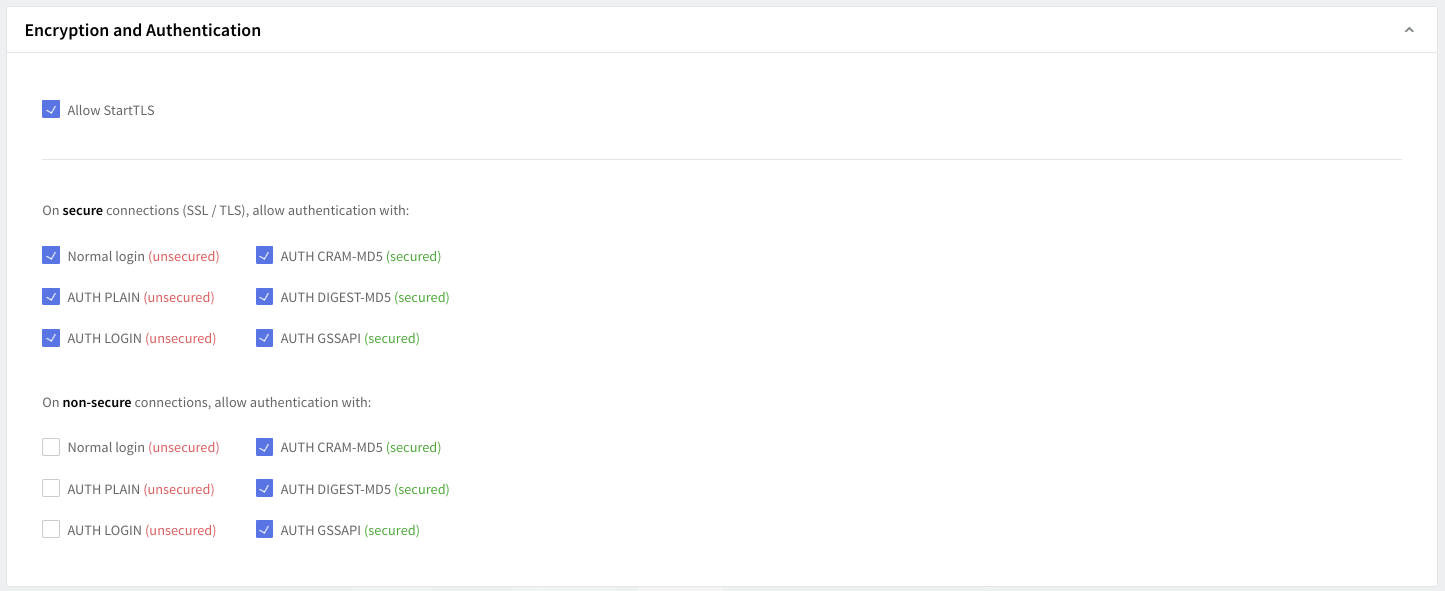The "POP3" tab allows you to configure parameters relative to this specific service's configuration, add listeners, and manage access to the service by adding rules applicable to all existing listeners.
Listeners and control rules
Listeners
The first section in the POP3 tab is "Listeners". Here, you can add, delete, or edit the TCP socket listeners for the POP3 service.

Editing one of the existing listeners will result in accessing two configuration pages: "General" and "SSL Settings". The same pages will also be displayed when hitting the "Add Listener" button and choosing the "Advanced Config" option.
By default, there isn’t any listed listener but you may create one on 0.0.0.0 and port 110, the standard port (non-SSL) for POP3 communication.
Access control

Access rules allow you to control connection to this service from specific Networks / IP Ranges / IPs.
Flow control

The service flow control context allows you to define the max connections, max connections/interval, max peer connections, and max peer connections/interval values.
Service configuration
Logging
You can select several types of messages to be logged for the POP3 service: critical messages, error messages, warning messages, informational messages, and protocol communication. To select which of these are to be logged, click the Log Level slider and move it to the left or to the right. The selected types of messages will change color from whiter to blue.

Log files can be stored using your internal log files, your system's log files, or within the log files located on a remote system. Use the Log drop-down menu to select where to have your log files saved.
Encryption and authentication

By checking the "Allow StartTLS", you allow sending the STARTTLS command for encrypting the connection if the server supports this command.
Select the allowed authentication types the Axigen mail server should use for its POP3 secure connections (SSL/TSL) in the SECURE connections checklist. Possible options are: normal login, plain, login, cram-md5, digest-md5, and gssapi. By default, all these methods are selected (all types of authentication are allowed on a secure connection). The methods are further divided into two categories: "secure" and "unsecure".
Select the allowed authentication types the Axigen mail server should use for its POP3 unsecured connections in the unsecured connections checklist. Possible options are normal login, plain, login, cram-md5, digest-md5, and gssapi. By default, only the secured authentication methods are selected.
Error control
To set a maximum allowed number of errors caused by invalid commands received from clients or by failed authentication attempts, check the related options in the "Error Control" area. Use the up and down arrows corresponding to each of these options to set a specific number of errors.
A value of 0 means that the respective limit is disabled (no limit is imposed).

Thread management
Thread management allows you to set different numbers of processing threads for the POP3 service, depending on your traffic load. First, using the up and down arrows, set a number of threads to be allotted when the POP3 service is started. To have a different number of threads for peak periods, check the overload option and use the up and down arrows to choose the thread number.

Depending on your POP3 service load, you can increase the number of processing threads which can lead to increased performance and response time for this service. However, this increase should be made very carefully, and making sure that the server hardware can provide the processing and memory resources required by a higher number of threads. The default setting of 2 starting threads and an increase on overload to 20 threads is recommended.
POP3 options

The administrator can configure the greeting string at the POP3 service level. This option is available as a service configuration from both CLI and WebAdmin. When defining the greeting string, the administrator uses the following placeholders (note that the placeholders are case-sensitive):
-
%H= network hostname of the server machine -
%D= networkhostname.domainnameof the server machine (FQDN) -
%A= listener IP -
%P= listener port -
%U= APOP ID in thenumber.number@hostname.domainnameformat -
%V= axigen version -
%%= %
When you are done configuring these parameters, remember to click the "Save Configuration" button to preserve your changes.